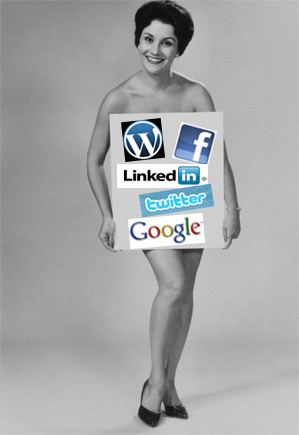Understanding The HITECH Act: HIPAA On Steroids
/
By Jeffrey Segal MD JD and Michael J. Sacopulos JD
Understanding the law before you send your patients any e-mail.
Snail mail is becoming less popular as the calendar pages turn. E-mail and social media networks have changed how we communicate. Before clicking the send button in an e-mail template, healthcare professionals should better understand that HIPAA violations have also entered a new era. More cases are prosecuted with assessment of both statutory civil fines and criminal penalties.
A little background: Even though HIPAA passed in 1996, little prosecution followed when patient privacy was violated. Since the law took effect in 2003, nearly 45,000 complaints were filed with the Health and Human Services (HHS) Office for Civil Rights. Of these complaints, only 775 cases were referred to the Department of Justice or the Centers for Medicare and Medicaid Services for investigation. None resulted in direct civil monetary penalties.
Then, in 2009 the HITECH Act (“HIPAA on steroids”) was enacted. This act intended to increase HIPAA confidentiality protections of Electronic Protected Heath Information(ePHI), instill tough civil and criminal penalties for violations, mandate notification of breaches of HIPAA protected heath information, and extend the definition of covered entities to include business associates. A tall order indeed.
For example under the tougher HITECH Act, in April 2010 a former employee of a hospital was sentenced to four months in prison for accessing the medical records of his coworkers and various celebrities. He had no “valid” reason for accessing these records.
According to the Health and Human Services (HHS), penalties have increased. Prior to the HITECH Act, the HHS Secretary could not impose a penalty of more than $100 for each violation or $25,000 for all identical violations of the same provision. Section 13410(d) of the HITECH Act strengthened the civil money penalty scheme by establishing tiered ranges of increasing penalty amounts, with a maximum penalty of $1.5 million for all violations of an identical provision.
Just how "high tech" are physicians when it comes to communicating with patients?
A survey by the health information firm Manhattan Research in 2009 found that 42 percent of physicians had some online communication with patients.
The American Academy of Family Physicians reported in a 2009 survey that just 6 percent of responding members had performed a Web-based consultation - that number was more than double the 2.6 percent who had done so in 2008.
But is all of this electronic communication legal?
The HITECH Act requires that all communications involving ePHI be encrypted. HHS recently adopted National Institute of Standards and Technology guidelines for encryption. This means that if a physician wants to consult, refer, or prescribe for a patient by e-mail, the e-mail had better be encrypted. Of course most patients do not have software to decrypt. So what alternatives do healthcare providers have? And, more importantly, how can this be made easy and pragmatic. Email was designed to simplify, not complicate.
Healthcare providers may seek their patient's consent to communicating via unencrypted e-mail. While HHS does not provide a standard form for securing patient consent, basic "informed consent" strategies should apply. First, get the patient's consent in writing. The patient should not be given just a binary choice – but a menu of choices. For example, a patient may wish to electronically receive information on appointment dates but not test results. The consent document – as is standard with most routine HIPAA forms -should also note that the patient may withdraw his or her consent at a later time. This can be part of an expanded HIPAA form the patient signs when first seeing you in the office.
Here are some more recommendations when communicating with patients electronically:
1) A physician may be held responsible for a delay when responding to a patient's e-mail. Solution: A physician that wishes to accept e-mail from patients should use an auto response feature that informs the patient that a) the physician typically responds to e-mail within XXX number of hours/days; b) if the patient requires immediate attention, the patient should telephone the physician's office or contact an emergency healthcare provider.
2) If a patient initiates an e-mail with a physician, Rachel Seeger of HHS Office for Civil Rights says that it is assumed that the patient consents to unencrypted communication. "If this situation occurs, the healthcare provider can assume (unless the patient has explicitly stated otherwise) that e-mail communications are acceptable to the individual”.
3) If a physician does end up sending a patient an e-mail, double check the recipients’ e-mail address before clicking the send button. This is to prevent the e-mail from being sent to the wrong person, therefore sharing private information to an unintended party. Good advice also in the non-healthcare world.
4) Add any e-mail a patient sends (and any response) to the patient's chart.
5) In the HITECH Act code 170.210 section B states that the date, time, patient identification and user identification must be recorded when electronic health information is created, modified, deleted, or printed; and an indication of which actions occurred must also be recorded. This means if you send an email to a patient with protected health information – and delete it – you will need a record of what was deleted and when. This is not dissimilar to crossing out a line in a paper medical record- updating the record – with a date of the update.
6) Since communicating with patients via e-mail is becoming stricter, more physician offices and hospitals are using portals as a means of communication. This allows the patient to sign in with a secure username and password to view their records and communicate with their physicians. The security rule allows for Electronic Protected Heath Information (e-PHI) to be sent over an electronics open network, as long as it is adequately protected. Of course, this is more complicated than using Outlook or gmail.
The HITECH Act has ushered in a new era of technology requirements and standards that must be met by physicians. Given HHS's recent enforcement efforts, physicians should use caution when electronically communicating with patients. By working within the boundaries of the six points above, physicians should comply with the HITECH Act.
Jeffrey Segal MD JD and Michael J. Sacopulos JD are with Medical Justice, a Medical Spa MD Select Partner that protects physicians from frivilous lawsuits.
Submit a guest post and be heard.










